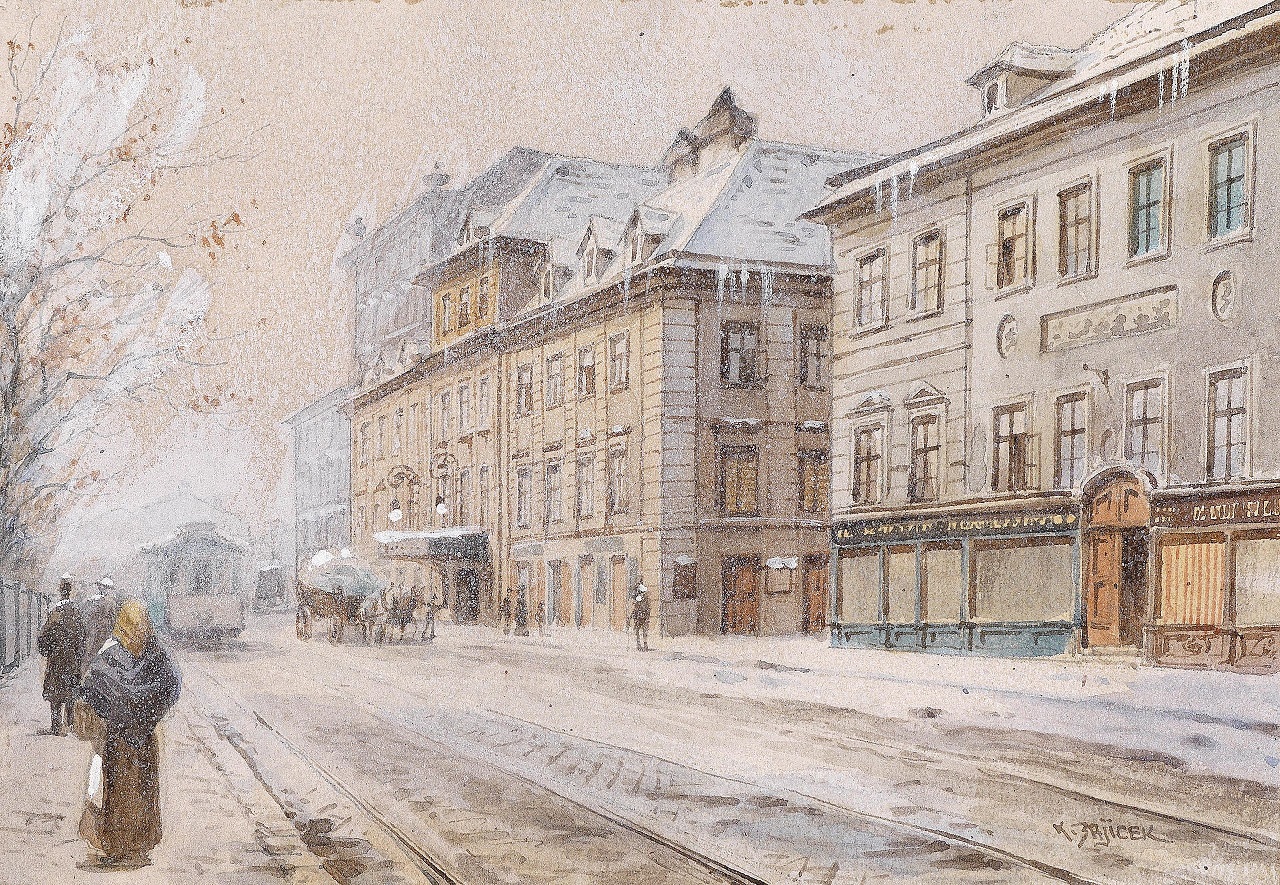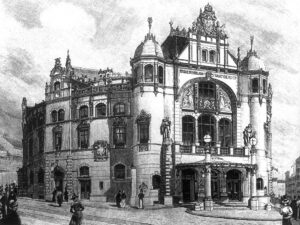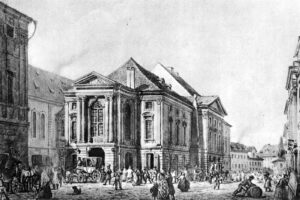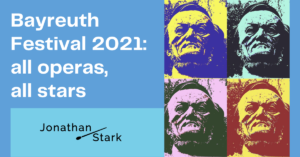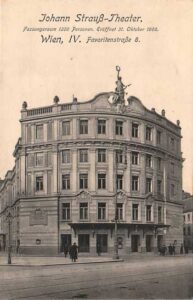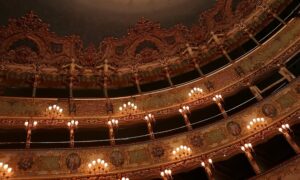Suburban stage, world centre for German-language musicals and Vienna’s third opera house: the Theater an der Wien can look back on a truly eventful history. A portrait.
What you will read in this article:
18th century: Rift through the theatre society
Which theatre one attended in 18th century Vienna depended decisively on one particular factor: the size of one’s purse. For the wealthy Viennese social classes, two theatres were available within the boundaries of the city walls: the National Theatre and the Kärntnerthor Theatre. Both theatres were so-called “court theatres”, i.e. they were financed by the Habsburg treasuries.
The less wealthy social classes could not afford to visit the court theatres. They had to resort to the suburban theatres, i.e. those located outside the city walls. It should go without saying that these suburban theatres were usually only poorly financed. Only three suburban theatres survived: the Theater in der Leopoldstadt, the Theater in der Josephstadt – and the Theater an der Wien.
Foundation by the Magic Flute poet
Again and again one hears that Mozart’s famous opera The Magic Flute was first performed at the Theater an der Wien. This is not quite correct. The Magic Flute was first performed in 1791 at the Freihaustheater (or: Theater auf der Wieden). This theatre had been operated since 1787 by Emanuel Schikaneder, the librettist of The Magic Flute and the first Papageno performer. However, in 1799 – eight years after the famous premiere of The Magic Flute – the Freihaustheater suffered the typical fate of suburban theatres. It was bankrupt.
But Schikaneder was not discouraged by this. Together with Bartholomäus Zitterbarth, a financially strong theatre lover, he opened his next theatre as early as 1801 – the Theater an der Wien, which to this day stands only a stone’s throw away from the former location of the Freihaustheater. So the Theater an der Wien and the Freihaustheater are not the same theatre, but both were run by Emanuel Schikaneder.
Famous premieres and first performances in the Theater an der Wien
Hardly any other theatre can boast as many famous premieres as the Theater an der Wien. The strong connection to Beethoven is particularly noteworthy: The important composer of Viennese Classicism not only premiered many of his symphonies as well as his only opera Fidelio at this house, but even lived in a wing of the theatre building for a time.
The Theater an der Wien also enjoyed an excellent reputation for its performances of operettas from the so-called “Golden” and “Silver Operetta Era” (read more about this in my article on Vienna’s Johann Strauss Theatre). In the 1990s, the theater became known above all for German-language premieres of musicals. I am sure you have heard of the musicals Cats (by Andrew Lloyd Webber) and Elisabeth (by Michael Kunze and Sylvester Levay). Both musicals received their German-language premieres at the Theater an der Wien.
The Theater an der Wien today
Since a restructuring in 2006, the Theater an der Wien mainly performs Mozart operas, operas of the Viennese classical and baroque periods as well as music theatre works of the 20th and 21st centuries. It is Vienna’s third opera house – alongside the Volksoper and the Staatsoper. Amusing: history repeats itself. For Vienna’s three opera houses are not all under the same ownership. While the Volksoper and the Staatsoper are federal theatres, the Theater an der Wien is run by the city. The rift between court opera and suburban stage – it still exists.
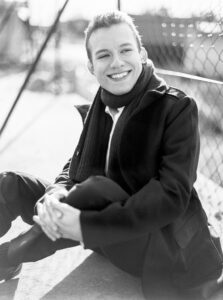
Jonathan Stark – Conductor
Hello! I'm Jonathan Stark. As a conductor, it is important to me that visits to concerts and operas leave a lasting impression on the audience. Background knowledge helps to achieve this. That's why I blog here about key works of classical music, about composers, about opera and much more that happens in the exciting world of music.

